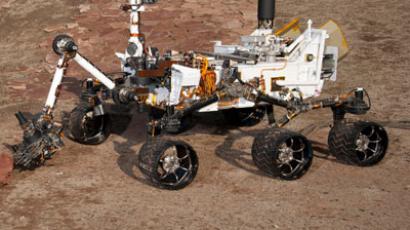EU to build 700-million euro lasers to zap nuclear waste, cure cancer

The EU is to spend €700 million to build the world’s most powerful lasers, in Romania, the Czech Republic and Hungary. The technology may be used to destroy nuclear waste and provide new cancer treatments.
The lasers are ten times more powerful than any yet built, and will be strong enough to create subatomic particles in a vacuum, similar to the conditions that may have followed the start of the universe. Scientists are hopeful that the lasers could be used to deteriorate the radioactivity of nuclear waste – some of which takes thousands of years to decay – in just a few seconds; they also hope to use them to target tumors. Experimentation with such a powerful laser could significantly expand knowledge in nanoscience and molecular biology.Called the Extreme Light Infrastructure project, two lasers will be built in the Czech Republic and Romania, with a third in Hungary, each specializing in a different area of research. The project will culminate in the development of a new fourth laser in a yet-undecided location, which is expected to have twice the power of the initial three. The project's Romanian coordinator, Nicolae-Victor Zamfir, told Bloomberg in an interview, “We can’t find in nature any phenomenon with such an intense power like the one that will be generated with this laser.”The laser will allow scientists to practice “a new sort of nuclear physics,” he explained. The Romanian laser, The Extreme Light Infrastructure Nuclear Physics Facility (ELI-NP), will be located in the Magurele research center and will consume about 10 megawatts of energy, enough to supply about 2,500 US households. The power will come from geothermal pumps installed on the site. The laser is expected to become operational in 2017.
Nuclear waste solution
The light beam technology could be used to reduce the amount of time it takes for atomic waste to lose its radioactivity from thousands of years to a few seconds. This would remove the need to build underground stores to keep the waste safe for centuries. Zamfir said that although there has been interest from computer companies in the project, there has been no contact yet with the nuclear industry. “We haven’t advertised the project properly yet”, Zamfir explained, adding that funding has only just been given the green light by the EU.
Cancer treatment
The research may also prove effective in the fight against cancer, replicating principles already used in a new type of cancer radiotherapy known as hadron therapy. The lasers would target deep-rooted tumors, reducing the risk of recurrence or new tumors. The first results of the trials are expected in 2018. “It’s going to take almost 20 years until we are able to do it,” Zamfir explained. Shirin Wheeler, spokeswomen for the European Commission on Regional Policy, explained, “The hope is to create a virtuous circle that by having the infrastructure there you also attract more funds and research.”
New money boost for science
The EU has decided to base the project in Eastern European countries, which boasted a proud scientific base in communist times, but more recently have seen a huge brain drain as scientists are lured to richer countries with higher salaries.EU subsidies are normally used to help poor regions improve their infrastructure and economies. Structural funds have traditionally been used for civic projects such as road building, but the Commission now encourages their use for projects that boost science and technology.The approval of ELI-NP is a welcome boost for Romania’s beleaguered scientific community, which has one of the EU’s lowest national investments in research and is reeling from a series of high-profile plagiarism scandals.Dragos Ciuparu, a chemical engineer at the Petroleum-Gas University in Ploieşti, Romania, told the weekly scientific journal Nature that he hoped the ELI-NP would help to keep researchers and engineers in Romania but warned that future governments must continue to invest seriously in the national physics community.The EU expects to spend €550 million in the first phase of the project, which is set to end in December 2013. The second phase will see EU funding raise to €700 million, and a further €180 million will come from other sources.














